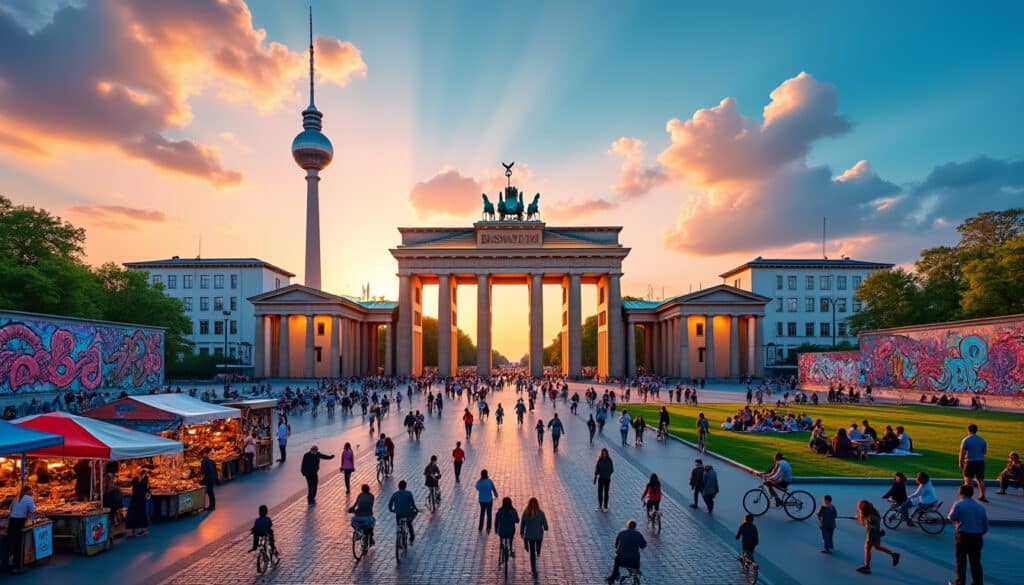Unveiling the fascinating history of Berlin is akin to peeling back the layers of a vibrant and tumultuous past. From its origins as a modest trading settlement to its critical role on the world stage during various pivotal moments of the 20th century, Berlin’s evolution reflects the resilience and dynamism of its people. In this article, we delve into Berlin’s journey from the medieval era to its contemporary status as a cosmopolitan hub, exploring key events, influential figures, and monumental transformations that have shaped the city. Discover how the Berlin Wall, Brandenburg Gate, and Museum Island stand as testaments to a storied past and cultural heritage.
The Medieval and Early Modern Foundations of Berlin
Berlin’s history begins in the late 12th century when it emerged from two trading settlements, Berlin and Cölln, situated on either side of the Spree River. This strategic location facilitated economic growth, linking the Baltic Sea trade routes to Central and Eastern Europe. Over time, Berlin evolved from a modest commercial outpost into a thriving medieval city.
The earliest documented mention of Berlin dates back to 1244, although the area was occupied earlier, as evidenced by archaeological discoveries. Albert the Bear is often credited with the foundation of Berlin, around 1163. The city’s early development was characterized by the construction of prominent churches, such as St. Nicholas’ Church in 1230, signifying the strong religious influences of the time.
By the 15th century, Berlin had established itself as a political and cultural hub. The Hohenzollerns, a prominent noble family, assumed control, installing themselves as the Electors of Brandenburg. This period marked a significant transformation, including the merger of Berlin and Cölln in 1432, forming a unified city that expanded its political clout. Subsequent constructions such as the Stadtschloss, inaugurated in 1451, embodied Berlin’s growing prestige.

The Protestant Reformation in the 16th century introduced religious upheaval. Berlin’s electors embraced Protestantism in 1539, aligning their political fortunes with the reformed religion. This shift altered the religious landscape of Berlin, as church properties were secularized, monasteries dissolved, and Lutheranism became predominant.
This era also saw Berlin’s economic expansion driven by industrial activities. The introduction of the printing press in the mid-16th century facilitated communication and information dissemination, promoting educational and cultural initiatives. The establishment of a goldsmith guild in 1270 highlighted the city’s focus on artisanal crafts and trade.
By 1701, Berlin’s importance was solidified when the Elector Friedrich III crowned himself King in Prussia. Berlin, thus, became the royal capital, ushering in an era of significant architectural developments. The Fortifications of Berlin were constructed, and lush avenues like Kurfürstendamm established, laying the groundwork for future urban expansion.
Despite its growth, Berlin frequently endured challenges, including fires, plagues, and political conflicts. These adversities became catalysts for resilience, driving urban reforms and strengthening infrastructure. As a burgeoning metropolis with a footprint in trade, politics, and culture, medieval and early modern Berlin set the stage for its emergence as a major capital of Europe.
Berlin’s Role as a Royal and Imperial Capital
Berlin’s stature continued to ascend as it transitioned from serving as a royal residence to becoming an essential imperial capital in the 19th century. This transformation was notably marked by the merger of Berlin with surrounding cities like Charlottenburg, Friedrichshain, and Spandau, substantially enlarging its geographic and demographic scope by the Greater Berlin Act of 1920.
The 18th-century coronation of Friedrich I as King in Prussia established Berlin as the royal capital. This status attracted artists, intellectuals, and architects across Europe, infusing the city with a vibrant cultural life. The Hohenzollern influence expanded Berlin’s infrastructural and architectural landscape, visible in landmarks such as Brandenburg Gate, a neoclassical triumphal arch that remains a potent symbol of Berlin.
In the 19th century, Berlin emerged as the capital of the newly unified German Empire in 1871. This period heralded an economic boom and significant industrialization, with Berlin developing into a hub of scientific research and innovation. The Reichstag Building, constructed in the late 1800s, served as a focal point for political deliberation, symbolizing the newfound unity and strength of the German Empire.
Growing industrialization attracted a diverse labor force, with Berlin becoming a magnet for migrants and revolutionaries. The burgeoning population surged living conditions and necessitated urban development. The period saw the establishment of educational institutions like Humboldt University, cementing Berlin’s status as a center of learning and intellectual exchange.
Berlin’s cosmopolitan aspects were reflected through cultural institutions like the Berlin Philharmonic, founded in 1882, contributing to the city’s reputation as a cultural capital. The expanding public transportation network, including the Berlin Stadtbahn, facilitated mobility, further integrating the city.
This imperial era was not without strife; the city endured political tensions and social unrest. The labor movement gained momentum, with socialist ideologies challenging established norms, setting the stage for future conflicts. Yet, through innovation and adaptation, Berlin continued its ascent, influencing art, culture, and politics well beyond its borders.
The dynamism of this era paved the way for more progressive changes. As Berlin entered the 20th century, its royal and imperial foundations transitioned into the modern, multicultural city globally recognized today. This historical period showcases the essential developments that shaped Berlin into a pivotal European capital.
The Tumultuous 20th Century: Wars and Divisions
The 20th century was a time of profound upheavals for Berlin, defined by wars and ideological divides. The implications of these conflicts on Berlin’s social, political, and cultural fabric were immense, leaving an indelible mark on this resilient city.
The turmoil began with World War I, which saw Berlin, the heart of the German Empire, plunged into the chaos of wartime scarcity and economic hardship. The defeat in 1918 led to the downfall of the German monarchy, paving the way for the Weimar Republic. This interwar period was both progressive and precarious, characterized by vibrant cultural expansion alongside severe economic challenges.
Berlin of the 1920s embodied a diverse society, where avant-garde art, music, and living standards flourished, creating lasting institutions such as the famous Bauhaus design philosophy. However, political polarization grew, culminating in Adolf Hitler’s rise to power. The establishment of the Nazi regime in 1933 led to systematic oppression and the persecution of minorities, drastically reshaping Berlin’s society.
World War II brought unprecedented destruction to Berlin, inflicting heavy casualties, devastating infrastructure, and leading to mass displacements. The battle for Berlin in 1945 resulted in Germany’s defeat and the city’s division among the Allied Powers.
The subsequent Cold War era saw Berlin at the epicenter of global political tension, symbolized in the construction of the Berlin Wall in 1961, cementing the city’s division into East Berlin and West Berlin. As a physical barrier, the Wall separated families, disrupted lives, and became the defining icon of the Cold War struggle between communism and capitalism.
Amidst these divisions, East Berlin became the capital of the German Democratic Republic, while West Berlin emerged as a symbol of Western ideological resistance. Economic differences were stark, with West Berlin benefitting from significant Allied support and East Berlin enduring economic hardship under communist rule.
The fall of the Berlin Wall in 1989 marked a turning point, signaling the eventual reunification of Berlin and Germany. This momentous event represented a triumph of human spirit against oppression and reinforced Berlin’s identity as a city that triumphs over adversity.
Throughout the 20th century, Berlin’s journey from war-torn landscapes to a unified metropolis showcased human resilience and the drive for freedom and unity. This tumultuous period remains critical to understanding the modern identity of Berlin and its role on the global stage.
The Reunification and New Beginnings
With the fall of the Berlin Wall heralding the end of the Cold War, the 1990s marked a renaissance for Berlin, embarking on a path toward reunification and renewal. This decade was pivotal in reshaping the city into a symbol of German unity and a beacon of cultural progress.
The reunification process was emblematic of Berlin’s transformation. Officially reunified on October 3, 1990, Berlin became the capital of a unified Germany, signaling a new chapter for both the city and the nation. This status brought about substantial infrastructural and economic enhancements, highlighting Berlin’s role as a dynamic European leader.
Berlin’s reinvention was underpinned by significant urban development projects. The city’s infrastructure was overhauled, with extensive renovations and new constructions breathing life into previously divided areas. Landmark projects included the redevelopment of Potsdamer Platz, once a wasteland during the Cold War, into a vibrant commercial center, mirroring Berlin’s aspirations for modernity.
Internationally, Berlin emerged as a hub for arts and culture. The 1999 relocation of the German government from Bonn to Berlin infused the city with political significance. Institutions like the Berlin Philharmonic and iconic venues such as the Museum Island continued to attract global audiences, reinforcing Berlin’s cultural prestige.
The city also embraced its historical legacy, featured prominently in landmarks like the Topography of Terror and the East Side Gallery. These sites promote awareness and commemoration, underscoring Berlin’s commitment to remembering its past while paving the way for a more inclusive future.
Technological development also became integral to Berlin’s resurgence, with innovations in telecommunications and transport shaping its future. The Brandenburg Gate, once a symbol of division, now stands as a testament to unity and peace, capturing Berlin’s transformation from past struggles to future promise.
Throughout the challenges of reunification, Berlin maintained its essence of resilience and innovation. Today, the city’s tapestry is woven with diverse influences, ensuring its place as an influential cultural, economic, and political player on the world stage.
Contemporary Berlin: Culture, Innovation, and Influence
Today, Berlin is a city that seamlessly blends its historical gravitas with modern vibrancy, offering a rich tapestry of culture, innovation, and global influence. Home to over 3.7 million residents, Berlin is not just the heart of Germany; it enshrines a spirit of unity and diversity celebrated worldwide.
Berlin’s contemporary identity is underscored by its thriving cultural scene. The city hosts countless festivals, music events, and art exhibitions that draw visitors and artists from around the globe. The Berlin International Film Festival (Berlinale), an annual highlight, showcases cinematic talents and creativity, placing Berlin at the forefront of the cultural landscape.
This cultural dynamism extends to Berlin’s eclectic culinary scene, reflecting a global palate that ranges from traditional German fare to innovative international cuisine. Iconic landmarks like the Berlin Cathedral and Pergamon Museum continue to attract tourists interested in exploring the city’s vast historical and cultural heritage.
In the realm of innovation, Berlin is recognized as a burgeoning tech hub. The city attracts startups and entrepreneurs, fostering a synergistic ecosystem supported by technological advancements and research initiatives. This environment has positioned Berlin as a leader in digital transformation within Europe.
The city’s commitment to sustainability and green living is evident in its urban planning and transport policies. Berlin promotes eco-friendly practices, including extensive public transportation networks and bicycling infrastructure, contributing to its reputation as a modern and livable city.
In terms of influence, Berlin engages actively on the international stage. The German capital hosts numerous diplomatic missions and international summits, underscoring its role in global diplomacy and policy shaping. Berlin’s open embrace of diverse communities and values of tolerance and freedom resonate worldwide, inviting travelers and thinkers to contribute to its ongoing narrative.
- Culture: Known for vibrant festivals like Berlinale 🎥
- Innovation: A leading tech and startup hub 💡
- Transport: Eco-friendly and modern infrastructure 🚇
- History: Rich with landmarks like Brandenburg Gate and East Side Gallery 🏛️
As Berlin continues into the 21st century, it does so with a blend of historical respect and forward momentum. This city remains a testament to resilience, diversity, and culture, ready to engage and captivate the world with its unique energy and spirit.
FAQs about the History of Berlin
- What are some key historical landmarks in Berlin? 🤔
Berlin is home to many historical landmarks, including the Brandenburg Gate, Berlin Wall, Reichstag Building, and Museum Island, each reflecting various aspects of the city’s storied past.
- How did the Berlin Wall impact the city? 🌐
The Berlin Wall physically divided East and West Berlin from 1961 to 1989, impacting thousands of lives and becoming a global symbol of ideological divides. Its fall in 1989 was a significant event leading to German reunification.
- Why is Berlin considered a cultural hub? 🎨
Berlin’s rich cultural scene, with its myriad festivals, art events, and historical sites, along with institutions like the Berlin Philharmonic and vibrant communities, solidifies its reputation as a global cultural capital.
- What is Berlin’s role in digital innovation? 💻
Berlin is a leading hub for startups and technology innovation in Europe, fostering an ecosystem for entrepreneurship and digital advancement. Its commitment to using tech for sustainable urban development is recognized globally.
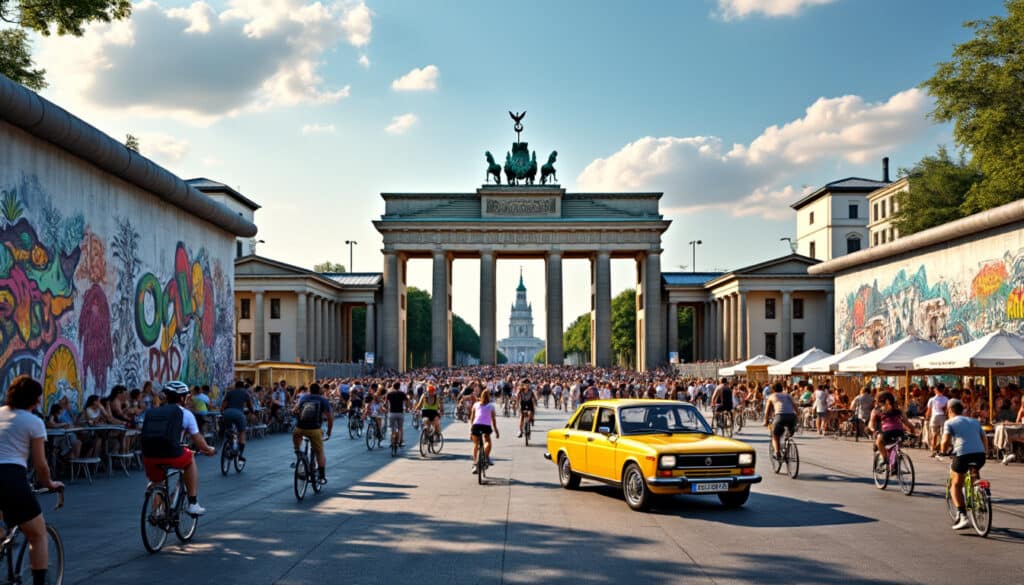
Fun Facts & Curiosities About Berlin
Berlin, a city of rich history and vibrant culture, never fails to captivate those who explore its streets. Renowned for its eclectic blend of old-world charm and contemporary vigor, Berlin is a treasure trove of fascinating facts and unexpected discoveries.…
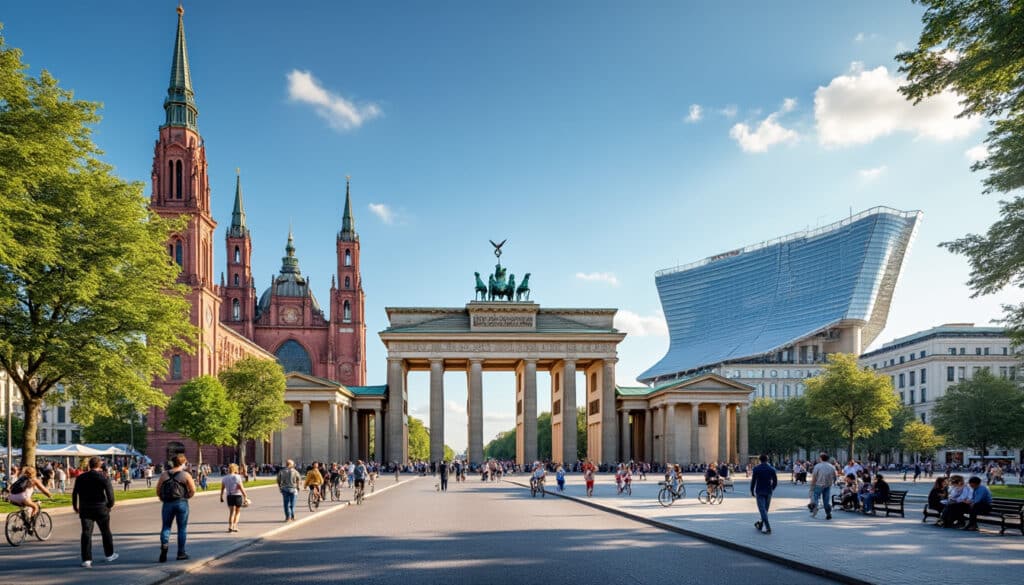
Architecture and urban features of Berlin
Berlin stands as a living testament to the intersection of architectural evolution and rich history. The city’s skyline is a mosaic of styles, reflecting its tumultuous and vibrant past. From the grandeur of the German Empire to the stark functionalism…

Berlin, a city that never stops moving, offers a multitude of experiences to its residents. From arts and technology to the vibrant nightlife, daily life in Berlin is both invigorating and diverse. For expats and locals alike, the city is…
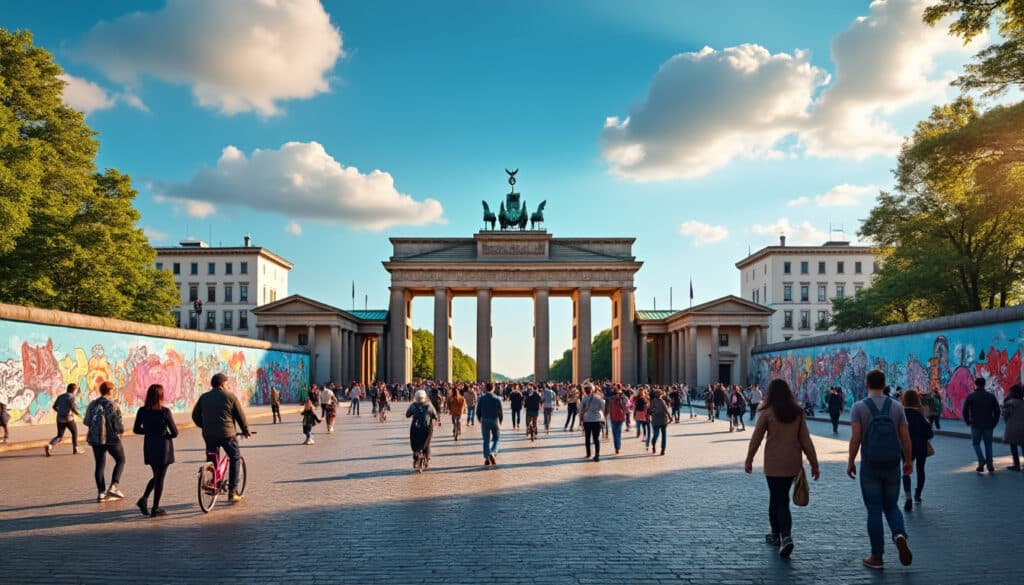
Demographics and geography of Berlin
Berlin, the vibrant capital of Germany, stands as one of Europe’s most intriguing cities, known for its rich history, diverse culture, and dynamic growth. As the largest city in Germany, it boasts a unique blend of historical significance and modern…
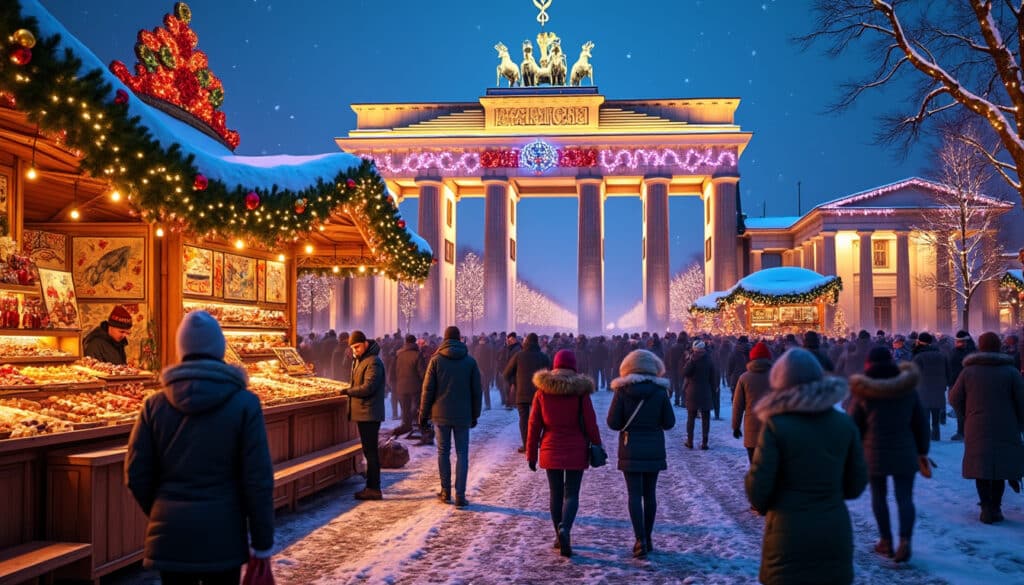
Holidays and celebrations in Berlin
Berlin, a city renowned for its vibrant cultural tapestry and energetic spirit, celebrates life through a diverse array of holidays and festivities. As one immerses in the lively pulse of this city, the celebrations not only reflect its deep-rooted history…

Language and spelling of Berlin
Berlin is not just Germany’s capital but also a hub of diverse cultures, traditions, and languages. With its blend of history and modernity, the city offers a unique linguistic experience. Travelers and residents alike are exposed to a rich tapestry…
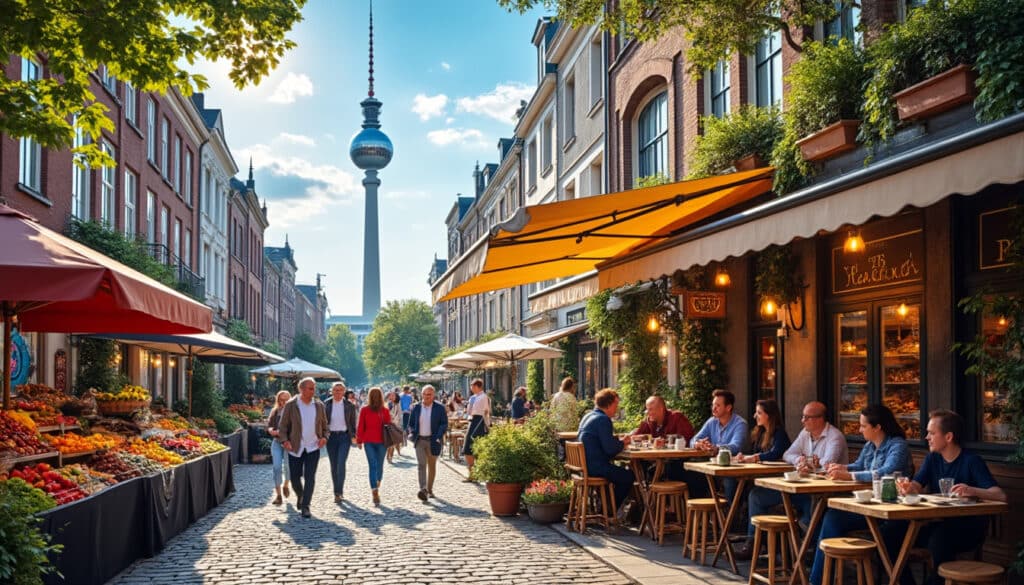
Local tips for tourists in Berlin
Berlin, the vibrant capital of Germany, is a city teeming with history, culture, and an unrivaled nightlife. While the must-see landmarks such as the Brandenburg Gate and the Berlin Wall are well-known, there’s a treasure trove of local secrets that…
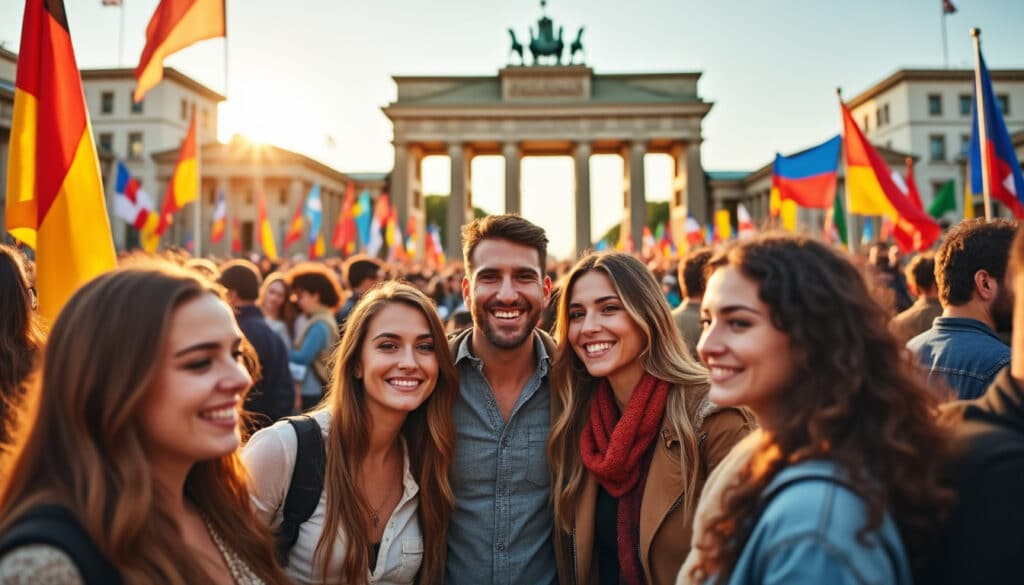
Names, flags, and identity of Berlin
The city of Berlin, known for its rich history and dynamic urban life, stands as a testament to resilience and cultural diversity. From its iconic bear-emblazoned flag to the various names it has been associated with over centuries, Berlin’s identity…
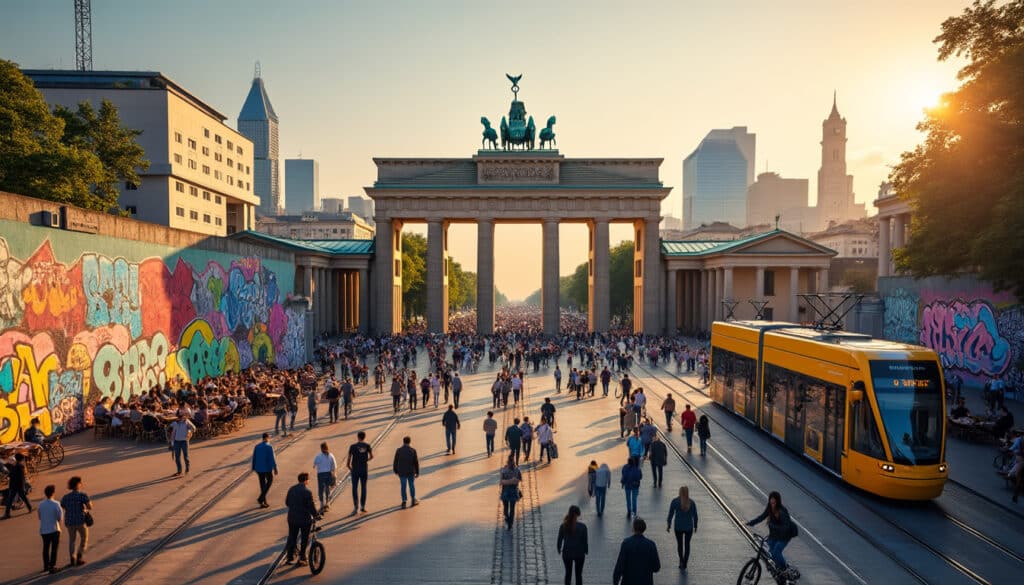
Reputation and identity of Berlin
Berlin, a city of transformation and dynamic culture, has sculpted a unique identity recognized worldwide. This vibrant metropolis offers a captivating blend of history, art, and contemporary life, shaping its reputation as a global cultural epicenter. From the iconic East…

Berlin, a dynamic city that never sleeps, is not only famous for its rich history, vibrant culture, and bustling nightlife, but also for its intricate relationship with time. As a city that exists at the crossroads of the past and…
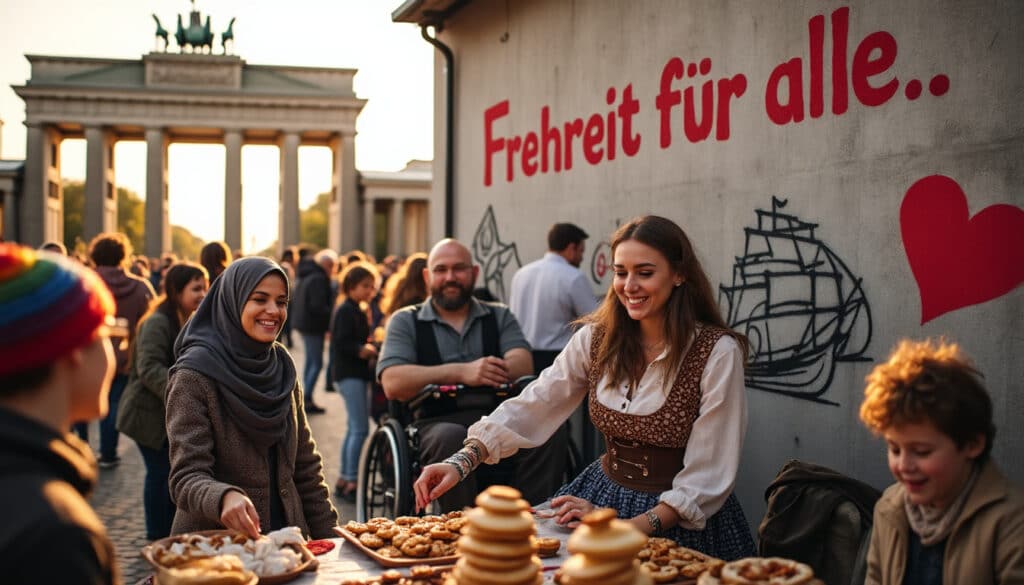
Unusual facts and social issues in Berlin
Berlin, the eclectic heart of Germany, pulsates with vibrant energy, drawing travelers and culture enthusiasts from around the globe. While its rich history and monumental landmarks often steal the spotlight, the city is peppered with quirky and intriguing facts that…

What does Berlin look, smell, feel like?
Berlin, the heart of Germany, is a city that tantalizes all senses. From its historic architecture to the dynamic street art, the pulse of Berlin is felt in every corner. Visitors are often captivated by the blend of vibrant city…


